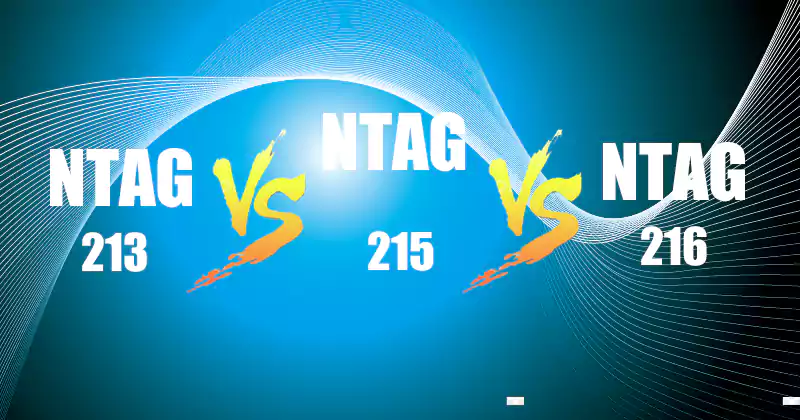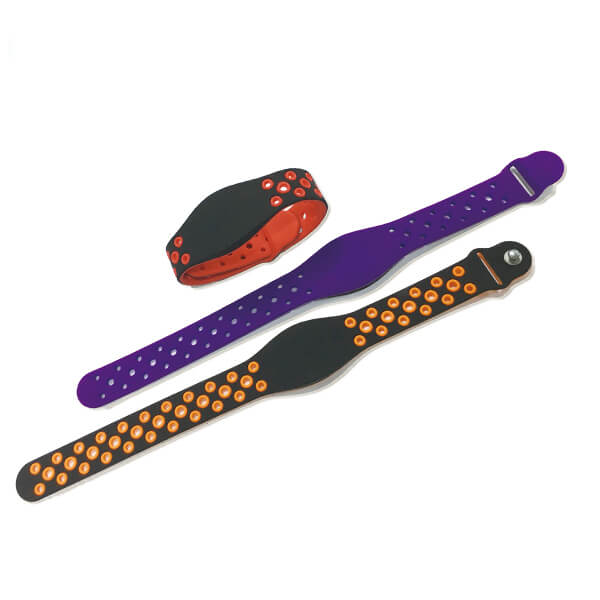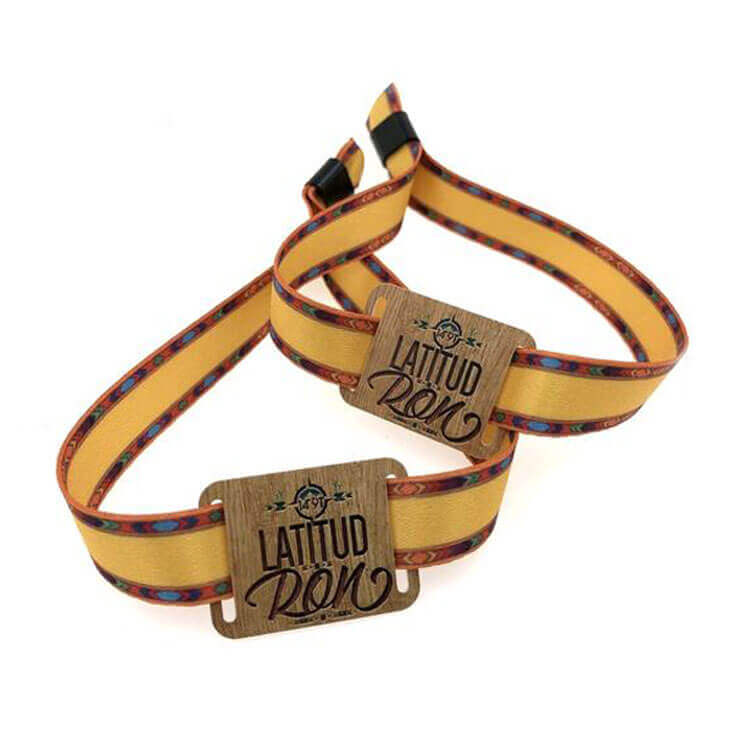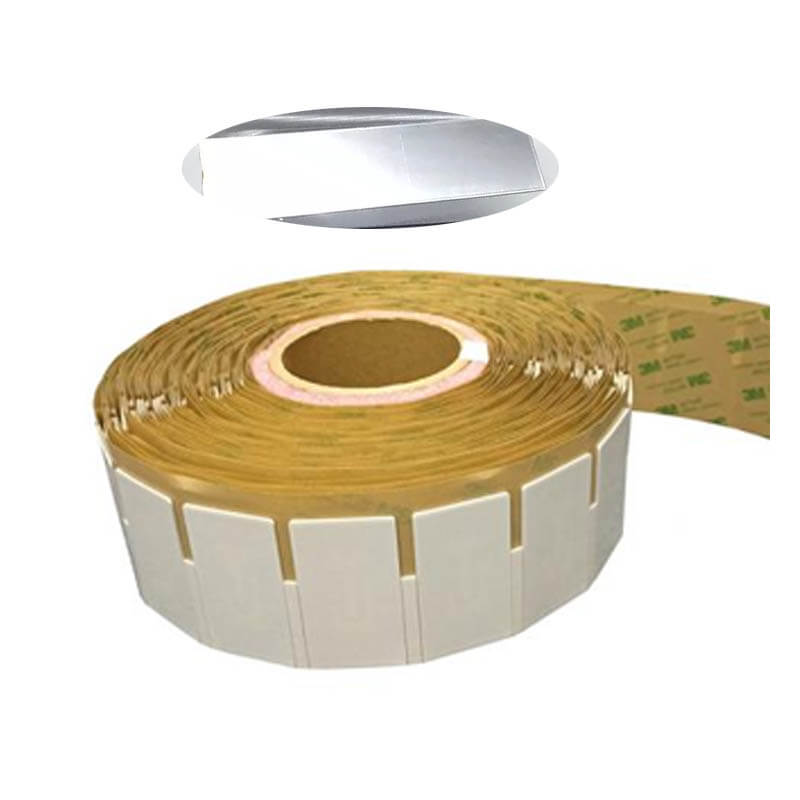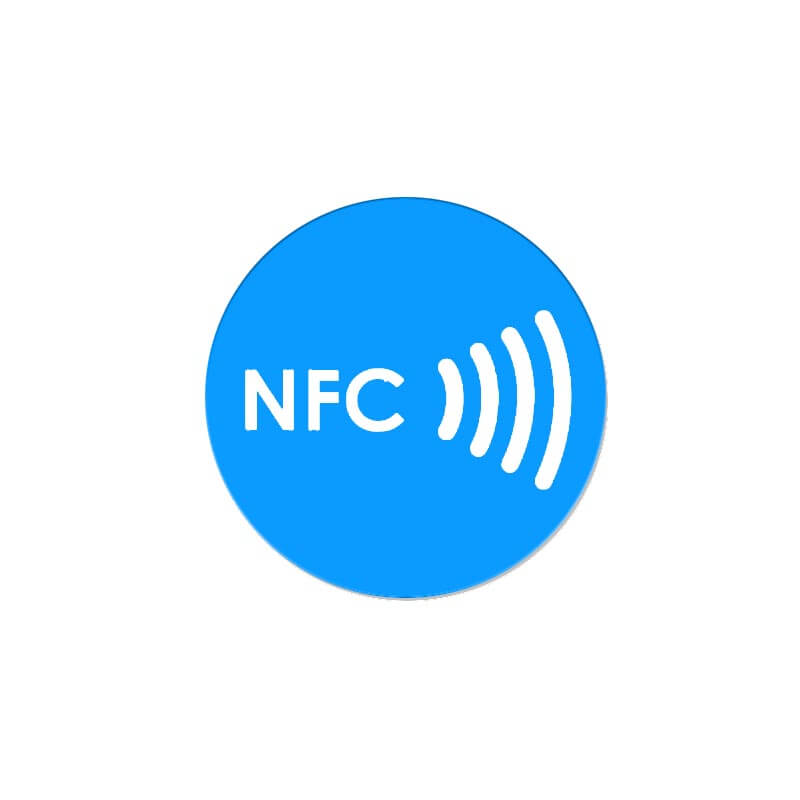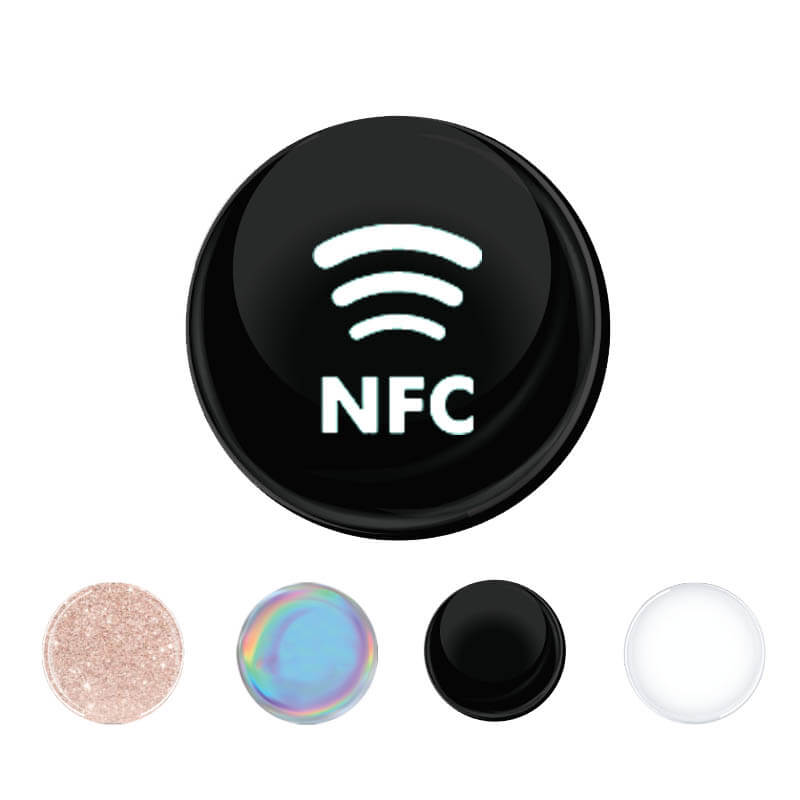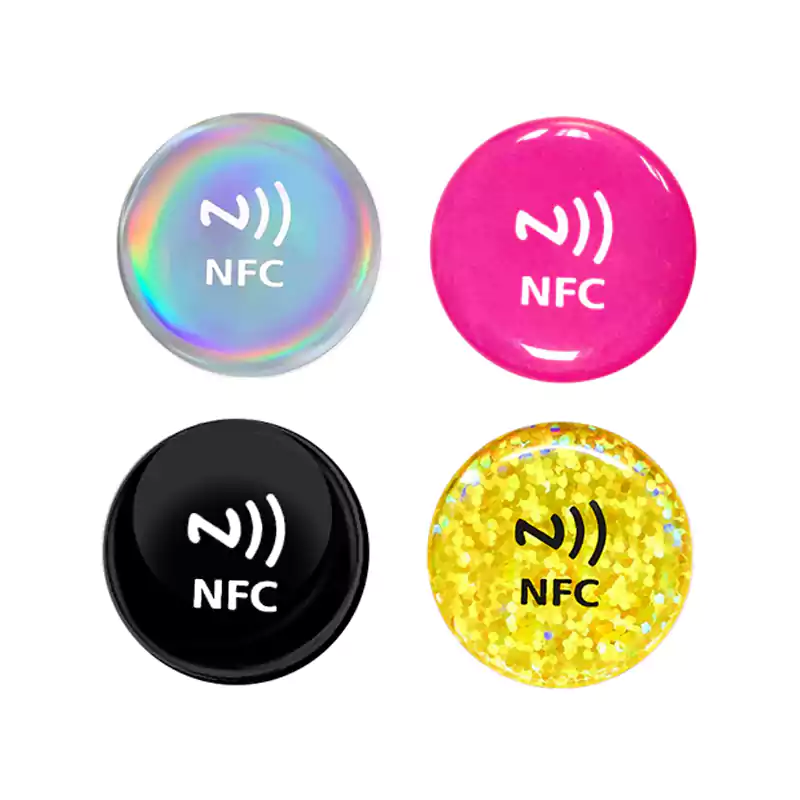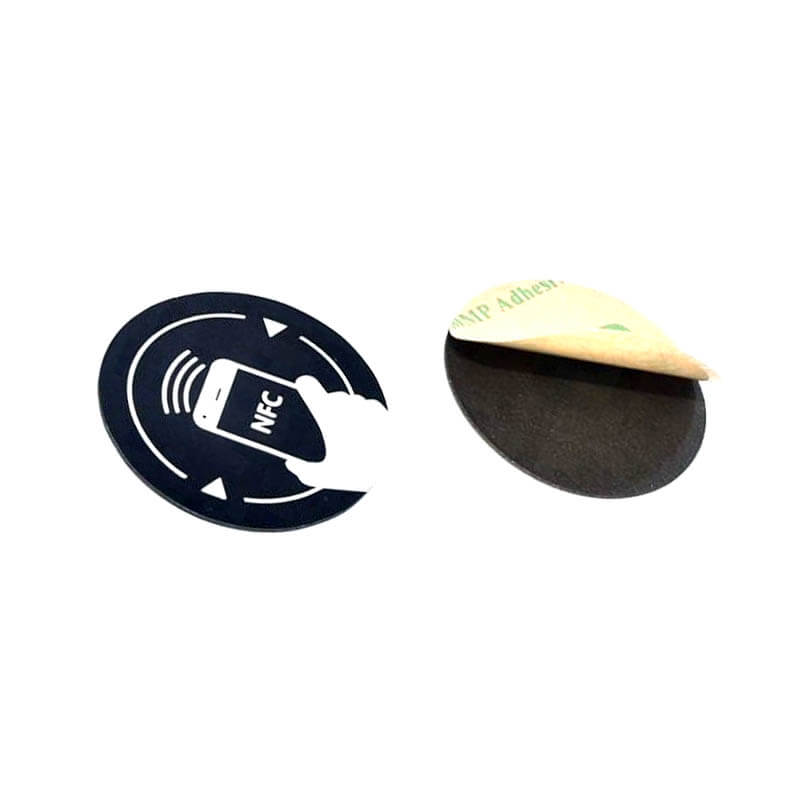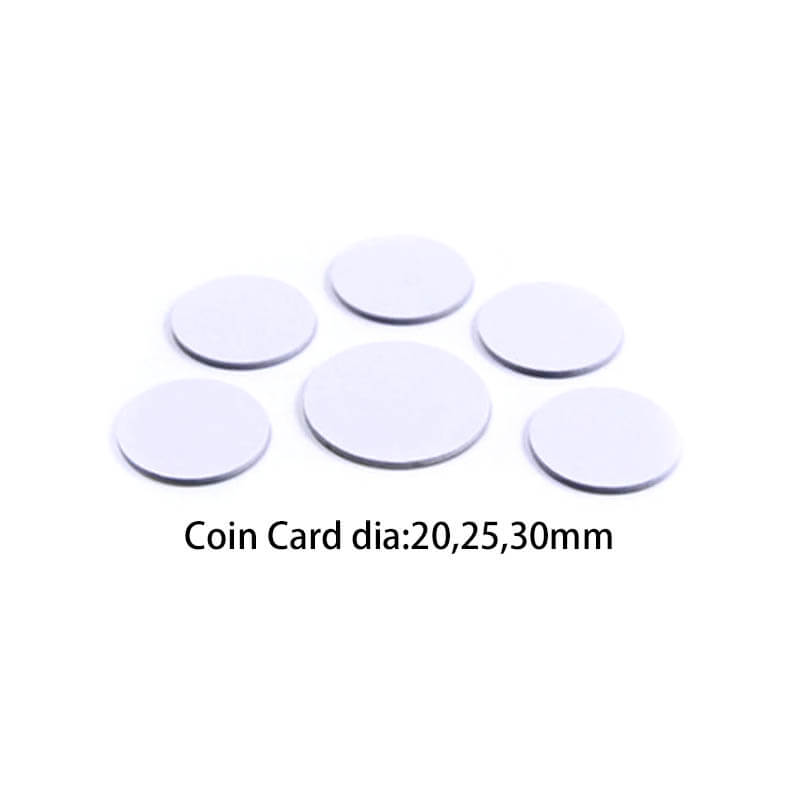NTAG series chips developed by NXP include NTAG210, NTAG212, NTAG213, NTAG215, NTAG216, NTAG213TT, NTAG424, etc. They are all compliant with NFC Forum Type 2 Tag and ISO/IEC14443 Type A specification. Among them, NTG213, NTAG215, NTAG216 are the most commonly used NFC chips, and they are very similar in function and application. So how to choose? What are the differences between them? Fewer people can figure it out, but this article will give you a clear picture.
How Does NFC Work?
Near-Field Communication (NFC) is a set of communication protocols for communication between two electronic devices over a distance of 4 cm (11⁄2 in) or less.NFC offers a low-speed connection with simple setup that can be used to bootstrap more capable wireless connections.
NFC technology has been used by many businesses to simplify daily operations such as payment checkout. Knowing more about the different varieties will help you decide which one to use for your business.
Thanks to NFC tags that simplify how things work. Just like Bluetooth and Wi-Fi, NFC uses wireless technology. When you tap your smartphone in an NFC sticker, it triggers certain operations that fulfill actions depending on what is written inside the program. However, unlike Bluetooth and Wi-Fi, NFC is faster.
Difference between Ntag213, Ntag215, and Ntag216 – Questions Answered
In identifying differences between the different NFC tags varieties, you need to evaluate two things. These are the type of chop and the type of tag. Read on to learn more about the difference between Ntag213, Ntag215, and Ntag216
Ntag213
Ntag213 is the new generation of the Ntag203 chip. It has advanced function and performance. It has enhanced reading speed and range. The fact that it has a bigger memory equal to 144 bytes makes it a better option. Note that the older version of Ntag2013 has already been replaced by Ntag213. Even so, you can still use the Ntag213 chip on older applications without any issue.
Ntag215
Ntag215 is a more affordable option if you aim for higher memory. It has 504 bytes of memory making it suitable to be encoded with V-cards. Its unique feature is the password-protection. IT is a very good NFC chip and is slightly cheaper than Ntag216.
Ntag216
Ntag216 has the highest memory of 888 bytes. It makes a great chip for business cards because it can store large data. Many businesses opt for this type because it is very fast. But it is also expensive at the same time.
Generally, the main difference for the three types of NFC tags is their memory. The bigger the memory, the more URLs can be stored. Even so, they have the same features as Counter ASCII mirrors and have a 32-bit password. They are also lockable.
Let’s take a look at some of their basic differences
Features
| Chip | User Memory | Max URL | Cost |
|---|---|---|---|
| Ntag213 | 144 Bytes | 136 Chars | Cheap |
| Ntag215 | 504 Bytes | 488 Chars | Medium |
| Ntag216 | 888 Bytes | 872 Chars | Expensive |
Specifications
| Chip | Brand | Chip Series | NFC Forum | Availability | ScanStrength |
|---|---|---|---|---|---|
| Ntag213 | NXP | Type 2 | NTAG | High | High |
| Ntag215 | NXP | Type 2 | NTAG | Medium | High |
| Ntag216 | NXP | Type 2 | NTAG | Low | High |
User Features
| Chip | UID (bytes) | 32-bit password | UID ASCII mirror | Scan Counter | Counter ASCII mirror | Lockable |
|---|---|---|---|---|---|---|
| Ntag213 | 7 | ✔ | ✔ | ✔ | ✔ | ✔ |
| Ntag215 | 7 | ✔ | ✔ | ✔ | ✔ | ✔ |
| Ntag216 | 7 | ✔ | ✔ | ✔ | ✔ | ✔ |
Technical Specifications
| Chip | Chip thickness | Operating Freq. | Data Trans. Rate | Input Capacitance | Fast Read | Anticollision | Standard | Release date |
|---|---|---|---|---|---|---|---|---|
| Ntag213 | 75 µm / 120 µm | 13.56 MHz | 106 kbit/s | 50pf | ✔ | ✔ | ISO/IEC 14443 A | 2013 |
| Ntag215 | 75 µm / 120 µm | 13.56 MHz | 106 kbit/s | 50pf | ✔ | ✔ | ISO/IEC 14443 A | 2013 |
| Ntag216 | 75 µm / 120 µm | 13.56 MHz | 106 kbit/s | 50pf | ✔ | ✔ | ISO/IEC 14443 A | 2013 |
Applications
| Chip | Application |
|---|---|
| Ntag213 | • Marketing & Advertising • Vouchers • Bluetooth Pairing • GS1 EPC/RFID • Object Identification • Product Information • Round Management • PLCR |
| Ntag215 | • Vouchers • Object Identification • Very long tracking URLs |
| Ntag216 | • Data storage • vCards • Object Identification |
Factors Affecting Your Choice for NFC Tags
Does the difference between Ntag213, Ntag215, and Ntag216 matter?
Of course, making wise decisions for your business requires knowledge about these things. Even so, there are many other factors that may affect your choice.
Tag Positioning
Many businesses have often encountered issues with NFC tags when used with metals. That is why you can see anti-metal or on-metal tags nowadays.
If you are planning to place NFC tags on metal surfaces, you might need to find an anti-metal NFC. This type of tag is useful for tagging and tracking metal assets. Normally, manufacturing and logistics industries need this technology.
Since most machines have metallic surfaces, you need an anti-metal tag to track them. When using, do not hide the metal tag behind a metal sheet. Put it on the side with no metal.
Size and Reading Distance
Size only matters in NFC tags when identifying the reading range. Larger NFC tags have a greater reading range. If your application requires space, we recommend that you use NFC tags with a large antenna. This may include putting NFC tags behind a panel or a glass.
In relation to the reading distance, on-metal tags have a lower range. Even if you get a larger size, it typically has a short distance.
Hostile Environments
NFC chips can work in temperatures between -20°C and +70°C. However, even though they are waterproof, they need added protection to resist external agents.
If your application has hostile environments like washing or blasting finance, you need to have your NFC tags designed for specific functions. Clarify with your service provider whether they can provide additional protection.
Tag Application
Finally, you need to determine how you will use your NFC tag. There are four main uses for NFC tags.
Stickers
NFC tags are most commonly used in the form of labels. Some tags are equipped with glue so they can resist harsh weather conditions.
Perforated
For extreme environments, you can have perforated NFC tags. These tags have holes so you can nail or screw them on surfaces.
Cable
Using cables is the best alternative to glue and holes. Cable ties can have NFC chips integrated into them so you can tighten them around their support.
Supports
You can embed NFC tags in special supports such as rings, bracelets, ID badges, and many more. This lets you use these items to automate processes on a daily basis. For example, NFC ID badges can be used to access VIP rooms. It eliminates the need for time-consuming security checks and simplifies entry.
Difference Ntag213, Ntag215, and Ntag216: Your Choice?
As we have said, the main difference between these three types of NFC tags are their memory sizes. To make the best decision, first, make an assessment about what your application would be.
Furthermore, identify how much information you need to store and the weather conditions of your environment. Then make the right choice according to memory requirements and budget.
Remember that NFC has many uses. Look through your business and assess whether you have struggled in a certain process. Would NFC technology help you simplify these issues? If the answer is yes, it is time that you take a leap and try this technology.
We have many business owners who thrive after using NFC. In the future, there will be many more uses that will come with NFC. Various categories will also be added. By that time, businesses may as well harness their true power to make better services.


